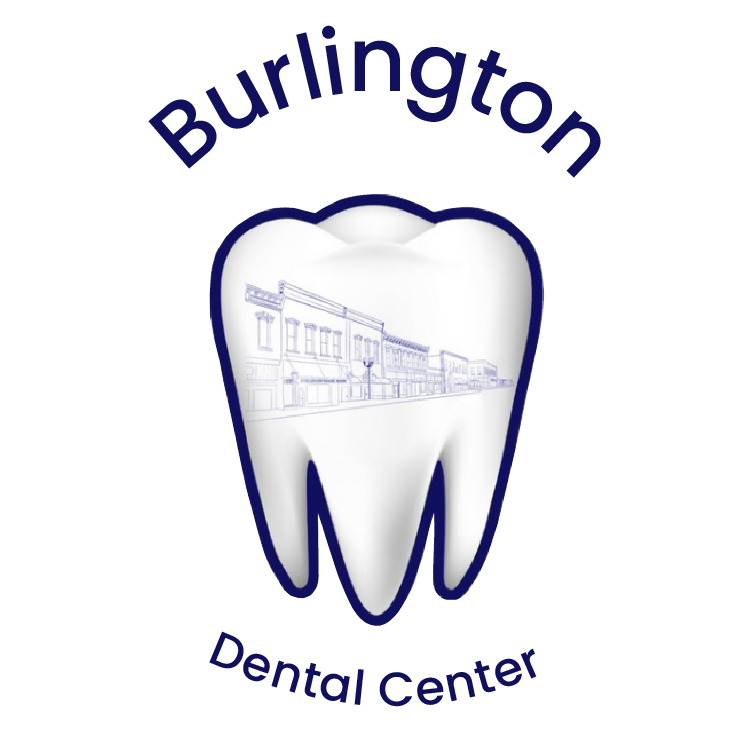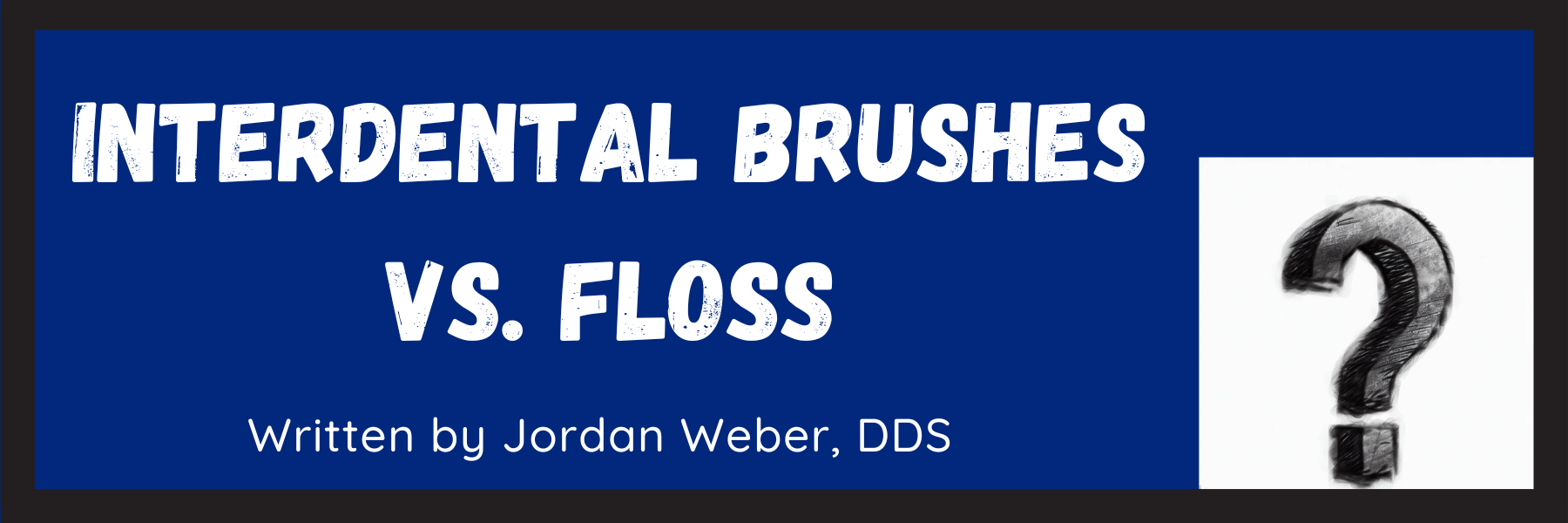Oral health is essential for overall systemic health, and cleaning between the teeth is necessary to maintain a healthy mouth. While daily brushing cleans the surfaces of the teeth, the spaces between them often require special attention.
Two popular options for cleaning between the teeth include traditional dental floss and the increasingly popular interdental brushes.
Here, we’ll look at the effectiveness of each, aiming to answer the question: which interdental cleaning aid is superior?
Quick Summary: Interdental Brushes vs. Floss
Interdental brushes may be slightly more effective than floss for plaque removal and reducing gingivitis, especially for those with moderate to severe periodontitis.
Floss is still essential for cleaning tightly spaced teeth where brushes can't reach.
Always consider personal comfort and dental advice when choosing between the two for your interdental cleaning routine. Ultimately, the “best” product is the one that you will use daily.
Understanding Interdental Cleaning (“Flossing”)
Interdental cleaning is the process of removing plaque and debris from the spaces between teeth, areas often missed by toothbrushes. This practice is crucial in preventing gum disease, tooth decay, and bad breath.
The history of interdental cleaning traces back centuries, with evidence of floss-like tools in ancient societies. In modern times, floss has evolved from silk to nylon and PTFE (Polytetrafluorethylene) materials, while interdental brushes have been refined for various gap sizes.
Both floss and interdental brushes have the same goal: to maintain the cleanliness of areas that toothbrushes alone cannot reach.
The Case for Interdental Brushes
Interdental brushes are small, bristled tools designed to clean between teeth.
Their sizes are tailored to fit snugly in the gaps, providing thorough plaque removal.
They're often chosen for their ease of use, particularly for those with dexterity issues or wider spaces between their teeth.
Many people find them more comfortable and less invasive than floss.
Recent studies have highlighted their effectiveness, showing that interdental brushes can significantly reduce plaque and the risk of gingivitis, making them a compelling option for maintaining oral health.
The Case for Flossing
Dental floss has been a staple in oral hygiene routines for decades, credited with the ability to extract food particles and plaque from the tightest of spaces between teeth. Available in various forms — from waxed and unwaxed strands to wider dental tapes and flavored options — floss is designed for precision cleaning.
It's particularly beneficial for individuals with closely set teeth where brushes may not penetrate.
Studies have shown that regular flossing can drastically reduce the incidence of cavities and gum disease by disrupting and removing the bacterial colonies that form along the gumline and between teeth.
Comparing Effectiveness
When choosing the best tool for interdental cleaning, effectiveness is a primary concern. Both floss and interdental brushes have their place in an oral hygiene routine, but how do they stack up against each other?
Plaque Removal: Interdental brushes have been shown to be particularly effective in removing plaque, especially in areas with larger spaces between teeth. Floss, with its ability to get into the tightest spaces, is indispensable for preventing plaque buildup where brushes cannot reach.
Reducing Gingivitis: Both methods can reduce gingivitis, but the degree of effectiveness may vary depending on the user's technique and consistency.
Research Findings: Recent studies offer additional insight into this debate. Research has suggested that interdental brushes may be more beneficial for individuals with moderate to severe periodontitis. Specifically, the use of interdental brushes, in conjunction with a manual toothbrush, is more effective in removing plaque and results in a larger reduction of probing depth than the use of dental floss. This advantage, although slight, points towards interdental brushes as the preferred choice for patients with significant periodontal concerns.
Patient Preference: The study also highlights the importance of patient preference. Comfort and ease of use often dictate whether a person will consistently use an interdental cleaning method, which is critical for its effectiveness.
Special Considerations: For those with braces or dental work such as bridges, interdental brushes might be particularly advantageous, providing ease of use and better access. Conversely, for those with very tight spaces between their teeth, floss remains an essential tool.
To summarize, while interdental brushes may offer a slight edge in certain scenarios, particularly for those with periodontal disease, the best approach is likely a personalized one.
It's always wise to discuss these options with a dental professional, who can provide tailored advice based on the condition of your teeth and gums.
User Experience & Preference
The success of any interdental cleaning method largely hinges on the user's experience and willingness to incorporate it into their daily routine. Many find interdental brushes easier to handle and less time-consuming, which can encourage more regular use.
Conversely, others prefer the control and precision floss offers, especially when dealing with tight contacts between the teeth. Regardless of the aid chosen, proper technique is critical.
For interdental brushes, this means gentle use and soft movement to avoid gum injury.
For floss, it involves creating a 'C' shape around the tooth to effectively remove plaque without harming the gums.
Education on these techniques is crucial for both methods to be effective and safe. While it seems like a simple process, many people are flossing incorrectly.
Professional Recommendations
Dental professionals typically advocate for a personalized approach to interdental cleaning. The general consensus leans towards using what works best for the individual's mouth and what they will commit to using regularly.
Professional guidelines stress the importance of interdental cleaning as a complement to toothbrushing. For instance, the American Dental Association endorses both flossing and the use of interdental cleaners as effective ways to clean between teeth. Some studies and guidelines suggest alternating between the two methods or using both, as each can reach areas the other cannot, ensuring a comprehensive clean.
Making the Right Choice
Choosing between interdental brushes and floss involves a careful consideration of your unique dental anatomy (such as tight contacts between teeth), personal comfort, and specific oral health needs.
If you have larger gaps between your teeth or wear braces, interdental brushes might serve you better.
Conversely, if your teeth are tightly spaced, floss is likely more appropriate.
The key is to select a method that you find easy and comfortable to use daily. Consistency is more important than the method itself, as the regular removal of plaque is what truly contributes to oral health. Don't hesitate to try both options and see which fits better into your oral care routine.
Final Thoughts
While both methods have their place in oral hygiene, the effectiveness of flossing vs interdental brushes varies based on individual circumstances.
The overarching message is that regularly cleaning between the teeth, with whichever aid you choose, is essential for maintaining oral health.
FAQs
Is it better to floss or use interdental brushes?
The choice between flossing and using interdental brushes largely depends on the spacing of your teeth and personal preference. Floss is better suited for tight spaces, while interdental brushes work well for larger gaps and cleaning around braces. Ultimately, the best dental hygiene products are the ones that you use consistently!
What are the cons of interdental brushes?
Interdental brushes can be more expensive than floss and may not be effective for very tight spaces between teeth. They also require proper sizing for different gaps to avoid gum damage and need to be replaced regularly.
Do interdental brushes cause gaps?
No, interdental brushes do not cause gaps. They are designed to clean between teeth where gaps already exist due to natural spacing or from recession or previous gum disease.
How often should you use interdental brushes?
It's recommended to use interdental brushes once a day, preferably in the evening to remove plaque and food particles that have accumulated throughout the day.
Can you damage gums with interdental brushes?
If used incorrectly or if the brush size is too large for the space, you can potentially damage your gums. It's important to use the correct size and to be gentle when inserting and removing the brush.
Do interdental brushes cause receding gums?
Proper use of interdental brushes should not cause gum recession. Receding gums can occur due to rough cleaning techniques, so it’s important to be gentle and use the correct size brush. If you notice gum recession, consult your dentist.
* Though the author of this post is a licensed dentist in the state of Kansas, this information is provided for informational and educational purposes only. Please use your best judgment and contact emergency medical services in the event of an emergency.




